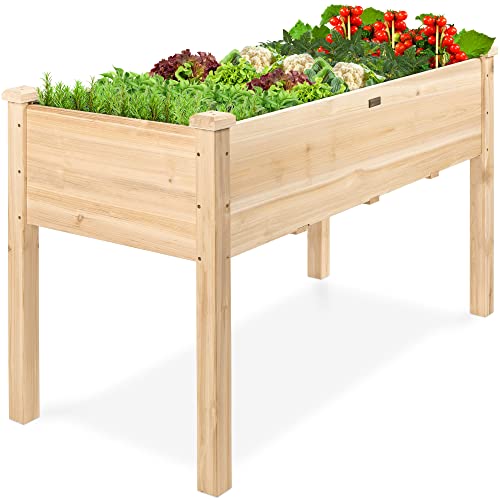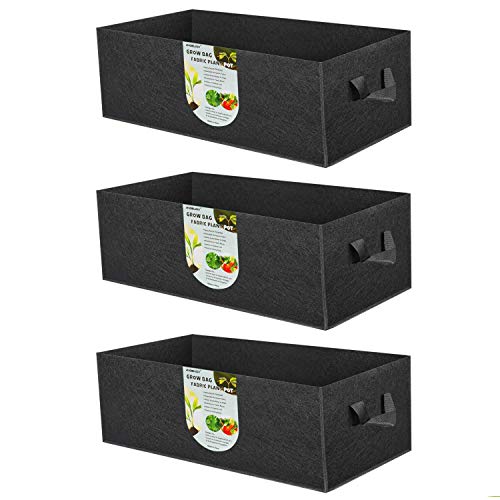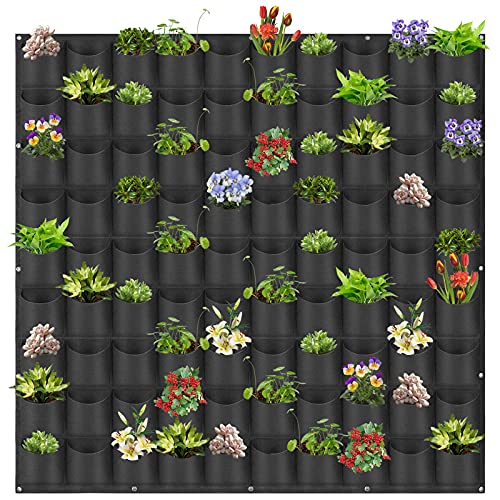
Raised planter boxes with legs, also known as elevated garden beds or standing planters, offer several advantages over other types of gardening.
However, they also come with a few disadvantages.
Here’s a comparison of raised planter boxes with legs, raised garden beds, container gardening, vertical gardening, and traditional in-ground gardening:
Raised Planter Box and Other Gardening Methods
Pros:
- Ideal for gardeners with mobility issues or those who prefer not to bend or kneel.
- Fill with your preferred soil mix, allowing better control over soil quality.
- Raised off the ground, they can help prevent damage from some ground-dwelling pests.
- Generally provide good drainage, preventing water-logged soil.
Cons:
- They usually offer less planting space compared to traditional raised beds or in-ground gardens.
- Elevated beds can dry out faster, requiring more frequent watering.
- Depending on the design, they may be less stable than beds on the ground.
Pros:
- Like planters with legs, raised beds allow you to control your soil quality.
- Less bending over compared to traditional in-ground gardening.
- Can provide some degree of pest control.
Cons:
- Building and setting up raised beds require more effort and potentially more cost than traditional gardening.
- May require a dedicated irrigation system, especially in drier climates.



Konnichiwa! (Hello!) I'm Pat Tokuyama, a Japanese tofu cookbook author, who travels for music, food, and adventure. If you like Japanese tea, checkout some of the newestorganic japanese tea, matcha bowls and noren and more!
** Curious about the Plant Based Japanese Cooking Club? ** Learn more here!
Pros:
- Containers can be moved around based on plants’ needs for sunlight or temperature.
- Almost anything can be used as a container, making it a potentially inexpensive option.
Cons:
- Like planters with legs, containers limit the root spread of plants.
- Containers can dry out quickly and will likely need frequent watering.
Pros:
- Allows for growing a large number of plants in a small footprint.
- Can be aesthetically pleasing and double as a green wall or privacy screen.
Cons:
- Watering, pruning, and harvesting may be more challenging due to the vertical setup.
- Requires installation of supports or structures.
Traditional In-Ground Gardening
Pros:
- Allows for more extensive root systems and larger plants.
- Ground soil retains moisture better than elevated or container options.
Cons:
- More bending and kneeling are typically involved.
- Less control over soil quality and more exposure to pests.
Transform Your Home into a Verdant Oasis: AeroGarden Harvest
 AeroGarden Harvest with Gourmet Herb Seed Pod Kit
AeroGarden Harvest with Gourmet Herb Seed Pod Kit Easily cultivate indoor gardens with the AeroGarden Harvest. This hydroponic system supports six plants up to 12 inches tall, thriving in water without soil mess. Its 20W LED grow light accelerates germination, mimicking sunlight. The touch-sensitive control panel simplifies monitoring, reminding you to add water and plant food. Complete with LED grow light system, power adapter, plant food, and Gourmet Herb Seed Pod Kit, it's all you need for vibrant indoor greenery. Start your hassle-free gardening journey today!
- Indoor gardening made easy with AeroGarden Harvest, eliminating soil mess.
- Year-round harvests regardless of outdoor conditions.
- Compact countertop design accommodates six plants.
- Accelerated growth thanks to the 20W LED grow light.
- Higher upfront cost compared to traditional gardening methods.
- Reliance on electricity for the LED light increases energy consumption.
- Limited plant variety may be restrictive for some users.
Conclusion
Choosing the right type of gardening depends on your specific needs, physical ability, space, and the types of plants you want to grow.
Each approach has its own unique benefits and drawbacks.










Konnichiwa! (Hello!) I'm Pat Tokuyama, a Japanese tofu cookbook author, who travels for music, food, and adventure. If you like Japanese tea, checkout some of the newestorganic japanese tea, matcha bowls and noren and more!
** Curious about the Plant Based Japanese Cooking Club? ** Learn more here!